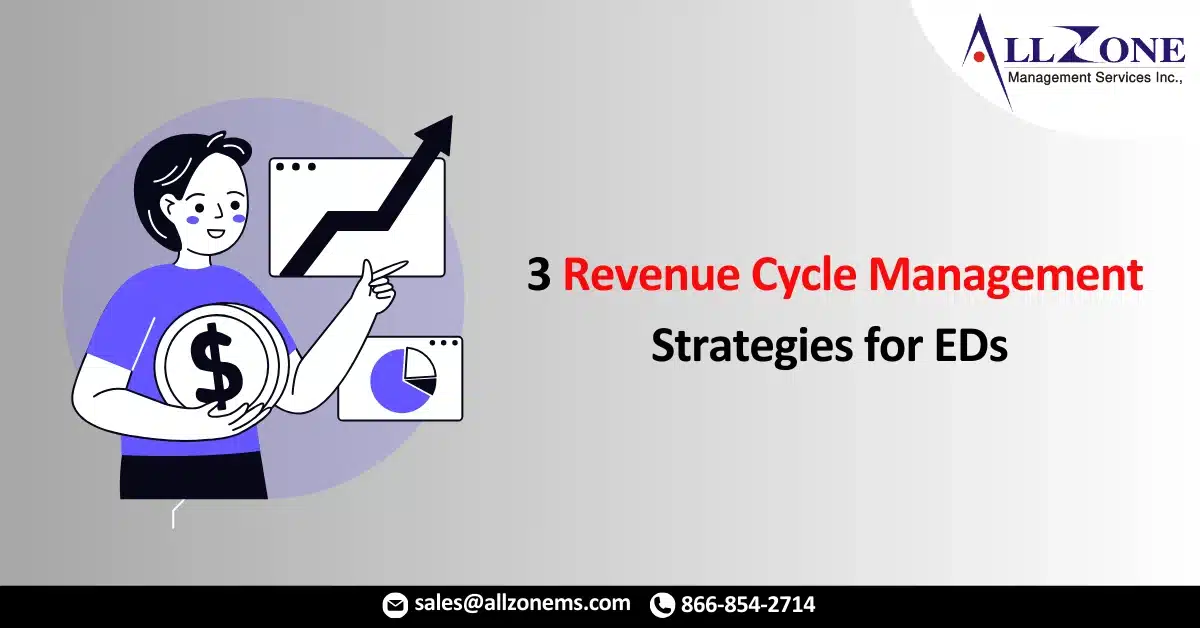Financial indicators, staffing, and leadership are three key factors emergency departments should prioritize for effective revenue cycle management during the COVID-19 crisis.
At the start of the year, emergency departments (EDs) across the country began to prepare for an expected surge of patients infected with COVID-19, altering revenue cycle management and operational strategies. By March, though, many EDs started to experience the exact opposite. Over the past couple of months, ED patient volume has sharply declined – in some regions, by up to 50%.
Downturns can change the way one looks at business. But, what does that mean when the business is to manage an emergency department? How do EDs make sure budget and staffing are appropriately balanced as needs continue to change? And, how do EDs keep staff motivated and engaged despite the current crisis?
Monitor Financial Indicators and Make Frequent Adjustments
“Under normal circumstances, most physician groups can operate from an annual budget as long as actual results remain fairly consistent and predictable throughout the year,” explains Steve Kelley, Chief Financial Officer at Brault Practice Solutions. “But, under extreme circumstances like these, budget and forecast adjustments should be made regularly to account for anticipated trends and changing needs.”
Historically, ED groups have only had to adjust their staffing and budget upwards. As the US population grew older and frailer over the past few decades, ED patient volume has also grown steadily. Before the pandemic, some areas had the challenge of not having enough providers to keep up with patient volume. But now, they are experiencing the first sustained contraction the emergency medicine industry has ever seen.
“Staying on top of your patient volume and financial metrics is critical at this time,” says Kelley. “I recommend using a cash velocity tool to calculate the time it takes to convert a patient visit into an actual cash payment. Then, leverage a rolling 13-week cash flow model to help track your actual cash inflows and outflows. Together, these can serve as valuable tools to help guide any necessary operating adjustments.”
Patient volume is an important indicator in the business of emergency medicine. Generally, one would expect that more sick patients would equal more revenue to the ED. And, usually, one would expect that more sick patients would require more staff to provide care. But, is the opposite also true? Should fewer sick patients result in less overall staff?
Staffing in the ED Will Continue To Be a Challenge
“Traditional staffing models have lost alignment with the current demand of patients,” explains Dr. Jason Adler, Vice President of Practice Improvement at Brault Practice Solutions. “The old model of adjusting staff based on patient volume is no longer effective because emergency departments look much different today than they did six months ago.”
Provider groups ramped up staffing to prepare for the worst possible scenario, which fortunately ended up being less severe than expected. But, at the same time, ED patient volumes started to decline, and the average acuity per encounter started to rise.
“As a result, the acuity distribution of patients in some EDs has shifted. We’re now seeing fewer vertical Level-3 patients, leaving some departments with the extreme of having mostly lower acuity and critically ill patients,” says Dr. Adler. “This now creates new challenges for ED physician groups, as their providers see fewer patients per hour but end up more exhausted after every shift.”
For many physician groups, the natural tendency is to stick to what has always worked. But, as many healthcare leaders have pointed out, the industry may never go back to “business as usual.”
Leadership is Vital in Times of Crisis
“Fundamentals like financial planning and provider staffing are important disciplines, but physician groups should also keep leadership at the top of mind,” says Dr. Andrea Brault, President and CEO at Brault Practice Solutions.
Leadership drives organizational culture, and in turn, it can help keep teams focused and engaged. Every organization has a culture. Sometimes it is a written document, and sometimes it is just an intrinsic feeling, but it always manifests as a shared set of values and an expected course of business.
“It’s important for leaders to recognize and consider these values as part of their decision-making process,” explains Dr. Brault. “For example, if you’re a democratic group accustomed to making decisions as a team, don’t lose sight of that by fragmenting your decision-making process for the sake of expediency.”
“Similarly, if you’re a group that has traditionally valued service to the community over financial gains, then you should probably think twice about cutting staff and other resources that might be offering valuable support to the hospital or community at large.”
As the healthcare industry reels from the impact of COVID-19, it is essential for provider groups to be strategic and challenge long-held beliefs. Leadership and business fundamentals are just the first steps. The next part involves planning and preparing for what happens next.
For More Information: 3 revenue cycle management strategies for eds in a time of crisis

